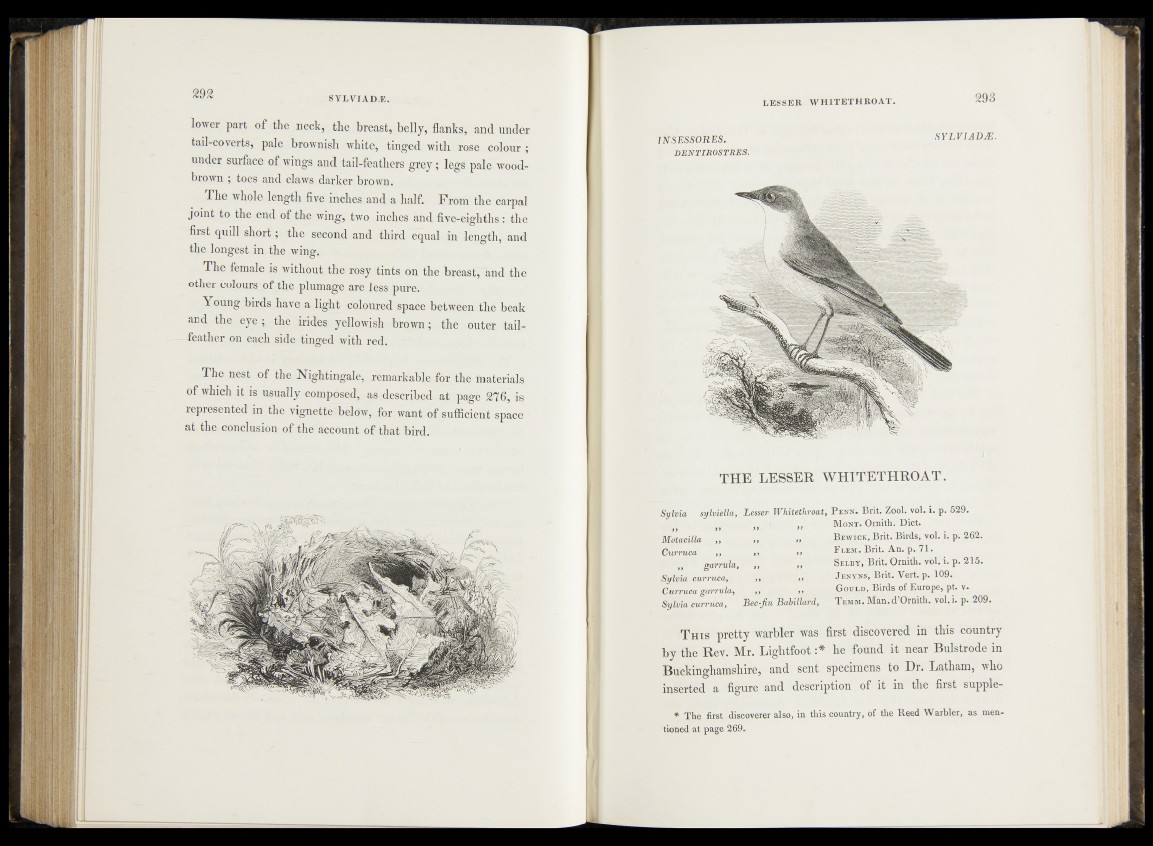
lower part of the neck, the breast, belly, flanks, and under
tail-coverts, pale brownish white, tinged with rose colour ;
under surface of wings and tail-feathers grey; legs pale wood-
brown ; toes and claws darker brown.
The whole length five inches and a half. From the carpal
joint to the end of the wing, two inches and five-eighths: the
first quill short; the second and third equal in length, and
the longest in the wing.
The female is without the rosy tints on the breast, and the
other colours of the plumage are less pure.
Young birds have a light coloured space between the beak
and the eye; the irides yellowish brown; the outer tail-
feather on each side tinged with red.
The nest of the Nightingale, remarkable for the materials
of which it is usually composed, as described at page 276, is
represented in the vignette below, for want of sufficient space
at the conclusion of the account of that bird.
1NSESSORES.
DENTIROSTRES.
SYLVIADÆ.
TH E LESSER W H IT E T H R O A T .
Sylvia sylviella,
Motacilla ,,
Curruca ,,
,, garrula,
Sylvia curruca,
Curruca garrula,
Sylvia curruca,
Lesser Whitethroat, P enn. Brit. Zool. vol. i. p. 529.
M ,, Mont. Ornith. Diet. „ B ewick, Brit. Birds, vol. i. p. 262.
,, F lem. Brit. An. p. 71.
M S elby, Brit. Ornith. vol. i. p. 215.
„ J enyns, Brit. Vert. p. 109.
- Gould, Birds of Europe, pt. v.
Bec-fin Babillard, T emm. Man.d’Ornith. vol.i. p. 209.
T h i s pretty warbler was first discovered in this country
by the Rev. Mr. Lightfoot :* he found it near Bulstrode in
Buckinghamshire, and sent specimens to Dr. Latham, who
inserted a figure and description of it in the first supple-
* The first discoverer also, in this country, of the Reed Warbler, as mentioned
at page 269,